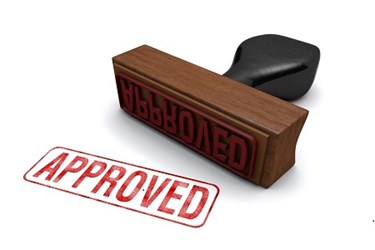Lessons Learned From Year One Of The FDA's Expedited Access Pathway
By Jof Enriquez,
Follow me on Twitter @jofenriq

Launched by the U.S. Food and Drug Administration (FDA) in April 2015, the Expedited Access Pathway (EAP) voluntary program seeks to facilitate patients' access to novel or breakthrough medical device technologies that could fulfill unmet medical needs for life-threatening or irreversibly debilitating diseases or conditions, and are subject to premarket approval applications (PMAs) or de novo requests.
Under the EAP program, FDA works closely with manufacturers and sponsors during device development to reduce timeframes during submissions by collaborating on a Data Development Plan (DDP) that could shift the burden of premarket data requirements to postmarket. In so doing, FDA accepts a "greater degree of uncertainty" in making certain devices accessible to patients who need them sooner, while addressing that uncertainty in postmarket reviews.
According to RAPS, the EAP program components include priority review, more interactive review, senior management involvement, and assignment of a case manager, depending on the availability of FDA's resources. The cross-disciplinary case manager is tasked to review the Data Development Plan, and coordinates activities between the review team and the sponsor.
During the first year of the program, FDA officials report that the agency has made 29 decisions on requests for EAP designation: 17 have been accepted into the program, and 12 have been denied. These decisions were typically made in 30 days.
EAP designation requests have included novel devices for the heart, brain, and kidneys that are manufactured by small start-up companies and large corporations. Some of the devices to successfully receive EAP designation include: Sylys surgical sealant (Cohera Medical), MyoRegulator neuromodulator (PathMaker Neurosystems), Hemolung respiratory assist system (ALung Technologies), Wearable Artificial Kidney (University of Washington Medicine), Barostim device for heart failure treatment (CVRx, Inc.), ReCell wound healing device (Avita Medical), and the Lungpacer Diaphragm Pacing System (Lungpacer Medical).
"We expect that our resources and focus on these promising technologies under the EAP program will allow them to be evaluated and enter the market more quickly, therefore providing options to the patients who need them most," states the FDA Voice blog post co-written by Erin Cutts, Policy Lead, Q-Submission Program, Office of Device Evaluation, Center for Devices and Radiological Health (CDRH), Owen Faris, Clinical Trials Director, Office of Device Evaluation, and Jeffrey Shuren, CDRH Director.
The officials think the EAP program has the most impact when sponsors request EAP designation prior to starting an IDE pivotal study, ensuring that data to be collected in the pivotal study are appropriate to include in the device's manufacturing submission. FDA wants requesting device sponsors to come to regulators as prepared as possible — with the Data Development Plan a key requirement — and to stay engaged throughout the whole process.
"As the program has grown in the past year, we’ve learned that companies who benefit most from this program are those that have a preliminary proof of principle for how their device works, but haven’t undertaken formal studies to support future submissions to FDA. For these companies, discussing their Data Development Plan with the FDA and agreeing on a roadmap to their marketing application and beyond is an important part of a successful review," the FDA blog’s authors wrote.
According to final guidance, the Data Development Plan should include three sections:
- An explanation and justification for the proposed balance of premarket and postmarket data collection, if a premarket-postmarket data shift is proposed and applicable;
- A description and summary of the data collection plan, including study synopses and study design; and,
- A timeline for the development and marketing of the device as well as for the postmarket data collection.
"As we look forward to the EAP program’s second year, we remain excited about the possibilities it presents – and to be working with industry to quickly bring new and innovative devices to patients," states the FDA blog.
Faster access to breakthrough device technologies will be further aided by recent legislation in the U.S. Senate. In March, the Senate HELP Committee advanced a bill to expand FDA's expedited review of breakthrough medical devices by including all classes of devices (beyond the current class III only), implementing quicker compliance time frames, and allowing shorter and smaller clinical trials. Last week, Senators introduced the Ensuring Patient Access to Critical Breakthrough Products Act to expedite CMS decision-making for innovative medical technologies for Medicare beneficiaries with serious illnesses.
Across the Pacific, the China Food and Drug Administration (CFDA) is implementing a similar program to FDA's EAP. Under that nation’s Innovative Devices Program, CFDA "offers advanced feedback from the Tyep Test Centres on device testing requirements, parallel consideration of product approval and product classification submissions and an case manager – a kind of internal CFDA champion who ensures that the submissions are guided through the process and receive priority treatment," according to Brandwood Biomedical's Arthur Brandwood.
Brandwood says CFDA's program has been enthusiastically taken up by industry — with the most recent (March 2016) figures showing more than 250 applications resulting in 55 device approvals since 2014. He mentions Abbott Vascular and Endologix as some of the international companies with successful applications into the program, along with domestic firms.
There is ongoing concern that medical device regulators are implementing expedited review programs at the expense of patient safety. However, Brandwood says that, in the case of FDA and CFDA, "neither agency is lowering the bar on regulatory approval standards" with both of their programs giving sponsors "additional guidance, consultation and input into the device development program, and a degree of hand holding to ensure the regulatory submission is dealt with expeditiously."
"By their very nature, innovative technologies are likely to be less well understood and potentially more risky… [Neither] industry nor regulators need a high profile failure of an innovator device, so no-one’s dropping their guard — and that’s how it should be," writes Brandwood.
